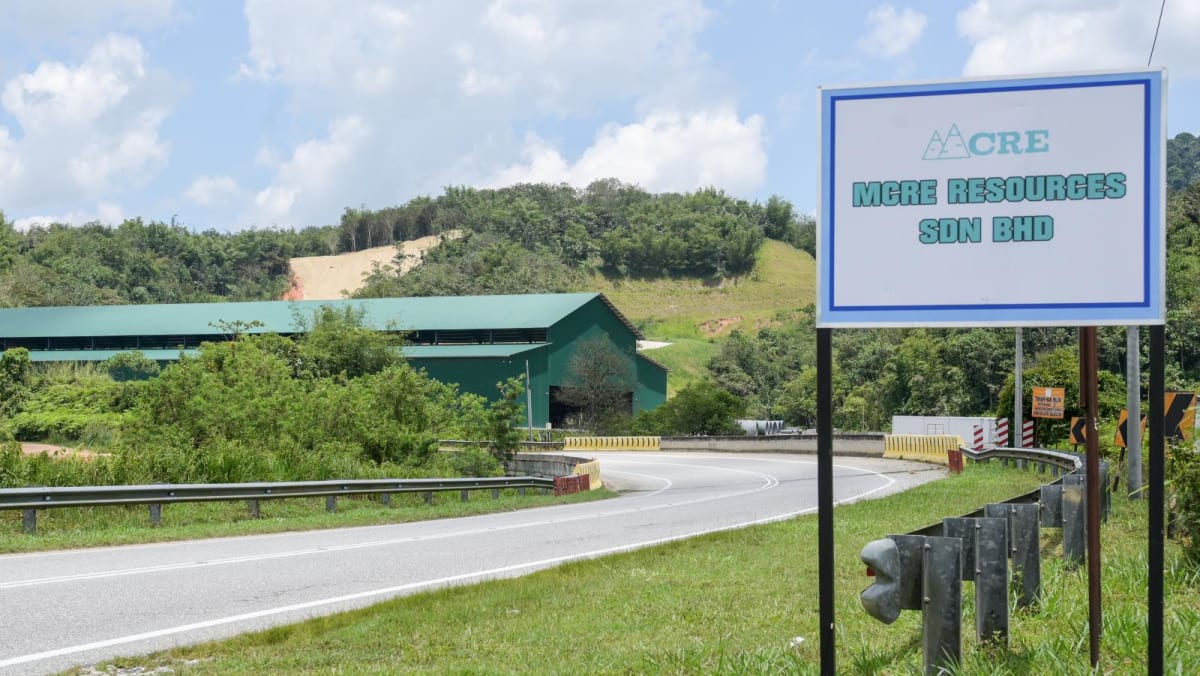
GERIK, Perak: Mr Ai Chuan Din Chum is aware that his village, Kampung Pong in the northwestern state of Perak, is located in an area that contains many natural resources that he believes has always been eyed by outsiders.
The former chief of the small quaint Siamese village located in a valley about 20 kilometres from the Malaysia-Thai border claimed that the area contains resources such as barite, tin ore, precious metals, and even gold.
“Over the years many people have come here. There is so much here, even under this earth,” the 70-year-old told CNA recently at his village.
Kampung Pong — accessible by a winding and hilly tarred road that allows only one vehicle to pass through at most stretches — is the closest settlement to a pilot “non-radioactive rare earth element” (NR-REE) mining project in Malaysia that began operations in March 2022.
There are about 200 people living in the village, with most of them working as general labourers or in informal jobs.
While Mr Ai Chuan and the other villagers are not directly involved in the NR-REE mining project located about seven kilometres away from the village via a dirt road, he told CNA that he had previously been hired to recee the area several times over the past few years for foreign businessmen.
He added that he is not sure what the rare earth elements are about exactly but believes that the interested parties wanted to extract some “chemicals” from the ground.
“They were doing some sort of tests with these chemicals. I was told that they wanted to make batteries for handphones or electronics with these chemicals,” he said.
JUMPING ON THE BANDWAGON
Rare earth elements are used in everyday consumer electronic devices such as laptops, cameras, televisions, and smartphones.
They are also considered critical for the development of so-called green infrastructure like renewable energy sources as well as electric vehicles (EV).
China controls the market for rare earth elements, producing about 70 per cent of the world’s supply while processing nearly 90 per cent of it.
And as the use of rare earth elements gains more importance, Malaysia is jumping on the bandwagon to begin the mining of these elements and establish a full-fledged industry in the country under one of its high-growth, high-value (HGHV) sector initiatives.
Prime Minister Anwar Ibrahim told Parliament on Sep 11 that the government plans to ban the export of rare earth raw materials to avoid the exploitation and loss of resources, as well as to guarantee maximum returns for the country.
He added that a new National Mineral Policy would be drafted to drive the comprehensive development of the mineral industry based on the “principles of sustainability and responsibility”.
The policy, Mr Anwar said, would be used as a guide in carrying out mining activities in permanent forest reserves, environmentally sensitive areas (ESA), and protected areas.
“Detailed mapping of rare earth element resources and a comprehensive business model that integrates upstream, midstream and downstream industries will be developed to maintain the rare earth value chain in the country,” he said then.
In this context, upstream refers to mining activities, while midstream is the process that retrieves the rare earth elements.
Downstream meanwhile refers to the industry that uses the rare earth elements to manufacture products such as super magnets.
Mr Anwar noted that the rare earth industry was expected to contribute RM9.5 billion (US$2.03 billion) to Malaysia’s gross domestic product in 2025, with the industry expected to create 7,000 new jobs.
Malaysia’s Minister of Natural Resources, Environment and Climate Change Nik Nazmi Nik Ahmad told CNA that the country currently has an estimated 16.2 million tonnes of NR-REE deposits in the country, with a potential estimated value of up to US$182 billion.
“The significance to push on (in) the rare earth minerals (industry) is due to the impact it can bring to the national economy,” he said in a written response to CNA’s queries.
He added that a set of standard operating procedures (SOP) for NR-REE mining has been presented and agreed in principle by the Cabinet, but that it would not be made public until a comprehensive policy on the rare earth industry is developed and finalised.

